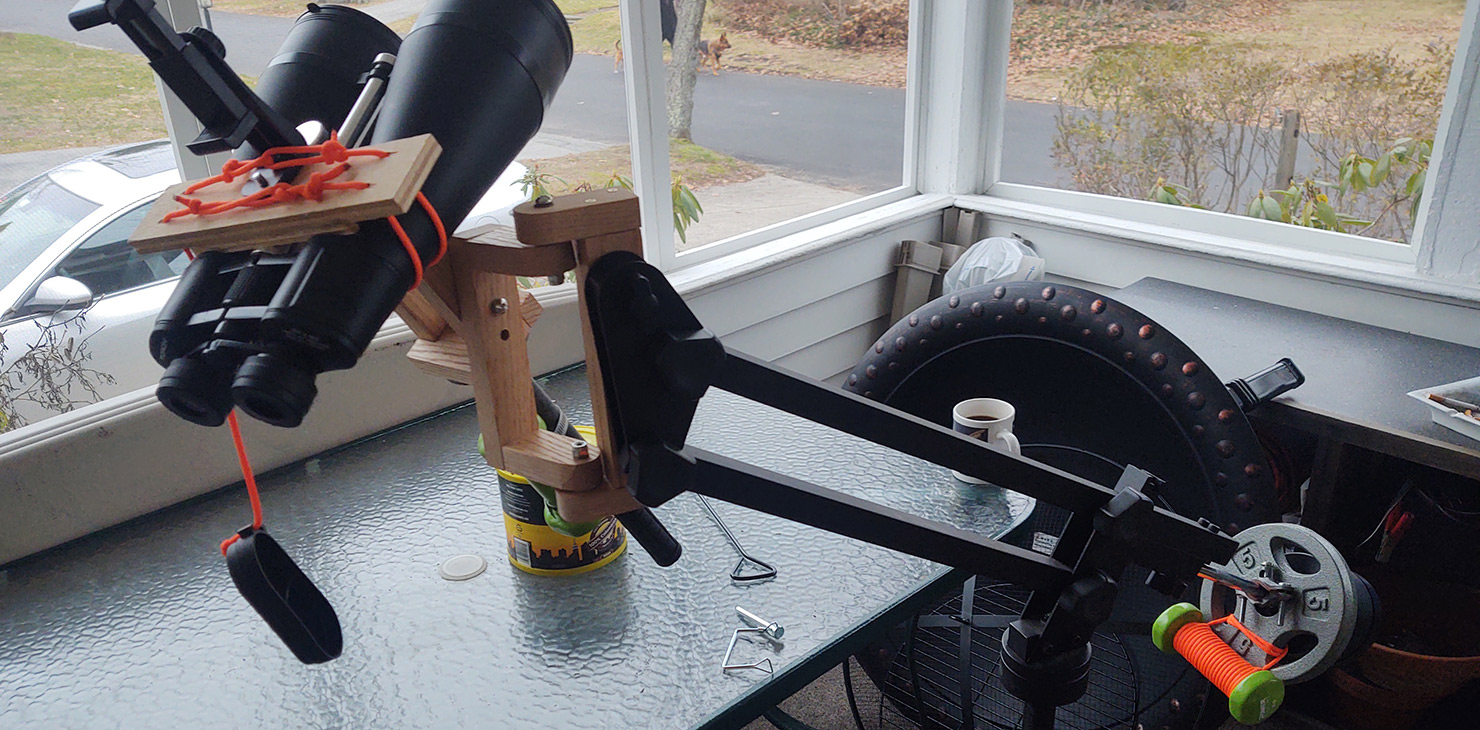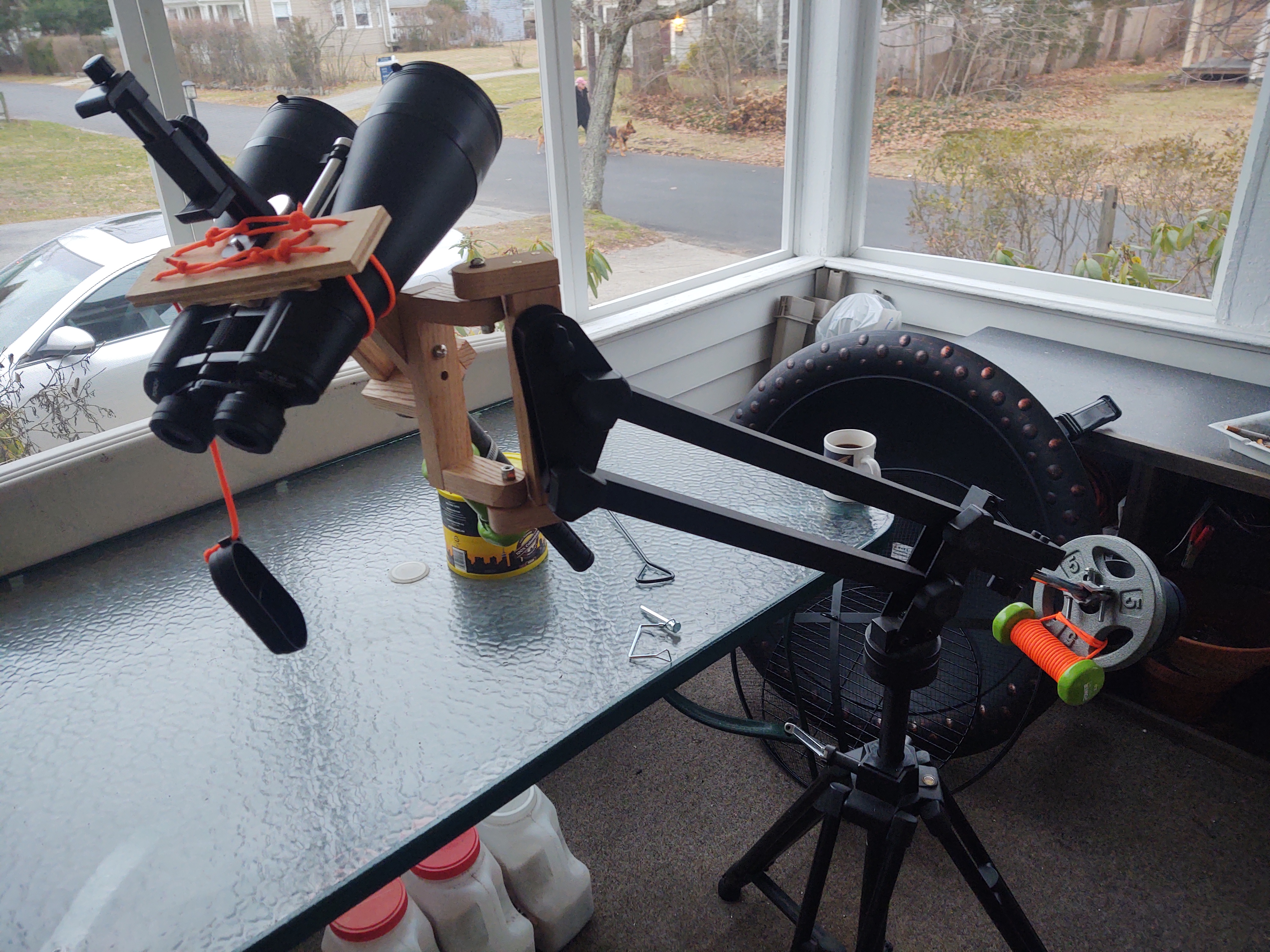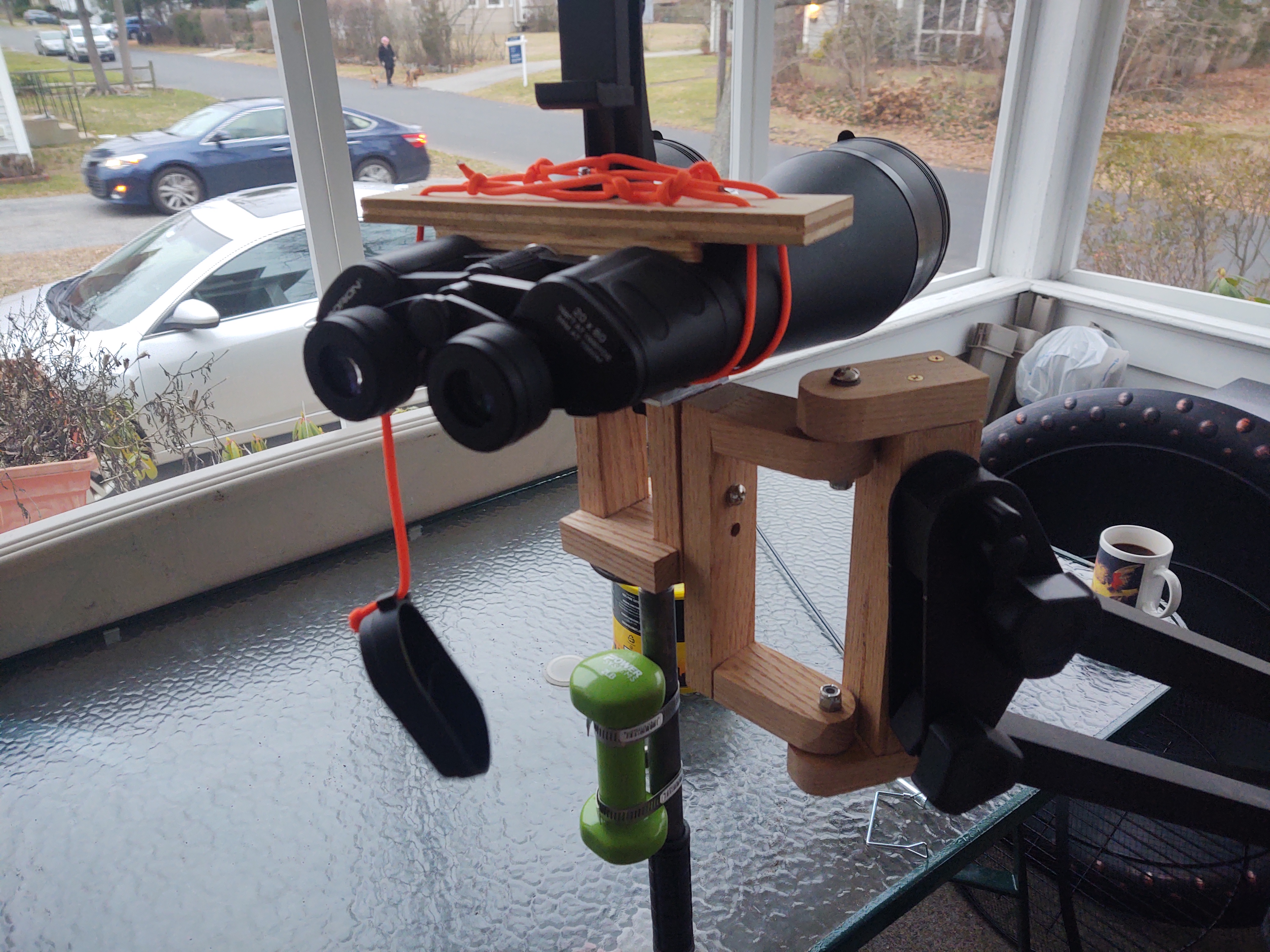
My Binocular Mount Project
March 2021 :
Hi Folks,
I just want to say HI and to share with you my recently completed rework of my binocular mount.
I have had an astronomical binocular 20X x 80mm for several years but have not made much use of them other than for observing the moon. The binoculars are fitted to a parallelogram mount attached to a heavy duty tripod. The advantage of a parallelogram mount is that the binocular stays on target even when the binocular is raised or lowered. This feature has proven very useful at star parties and outreach events. I would set the binoculars on the moon and then everyone, adults and children could take turns without my having to constantly recenter the moon. Now, the binoculars are attached to the mount using a simple L bracket at the end of the mount with a screw knob to lock the binoculars in their altitude position by compression. This arrangement has a lot of slippage making it difficult to accurately hold the binoculars in position while tightening the lock knob. This problem is merely annoying when observing a large target like the moon but becomes a major issue when searching for dim, deep sky objects.
Since I want to begin the Astronomical League’s Messier Object Binocular Observing Program which requires submission of detailed observation data with sketches, I needed a mount that balances the binoculars in front of my eyes leaving hands free for sketching and allows easy movement in altitude and azimuth to occasionally reacquire the object.
After considerable web research, I found a promising design that I could adapt for attaching to the existing mount. After measurements and making a 1:1 sketch up, I made the wood parts from 1” x 2” red oak and assembled them with brass screws. The bearing screws are ¼” stainless steel machine screws with nylon insert anti-back off nuts. The counterweight for the altitude axis was made using a ½” iron floor flange, a ½” x 12” black iron pipe nipple; a 2lb hand weight secured to the pipe nipple with stainless steel hose clamps and a bicycle hand bar grip was added to the pipe as a grip. The binoculars are attached to a 1/8” piece of aluminum using the captive screw that came with the binoculars. It was necessary to add additional mass to the parallelogram counterweight and I used a 5lb barbell weight with a 2lb hand weight whip tied to the barbell weight using paracord. The result is a mount that has 5 axes of movement: 0 to 90° in altitude and about 150° in azimuth at the binocular; raise and lower the parallelogram; rotate the parallelogram through 360° in azimuth; and raise or lower the entire mount at the tripod. I added a bracket to the binocular for holding a smart phone so that I could use a smart phone sky chart. The pictures show the finished mount. The mount moves easily with a light touch, has no noticeable back lash and stays steady on target. However, it is sensitive to level so it is necessary to carefully level the tripod. The pictures show the finished mount.
I am looking forward to clear skies and warmer temperatures.





